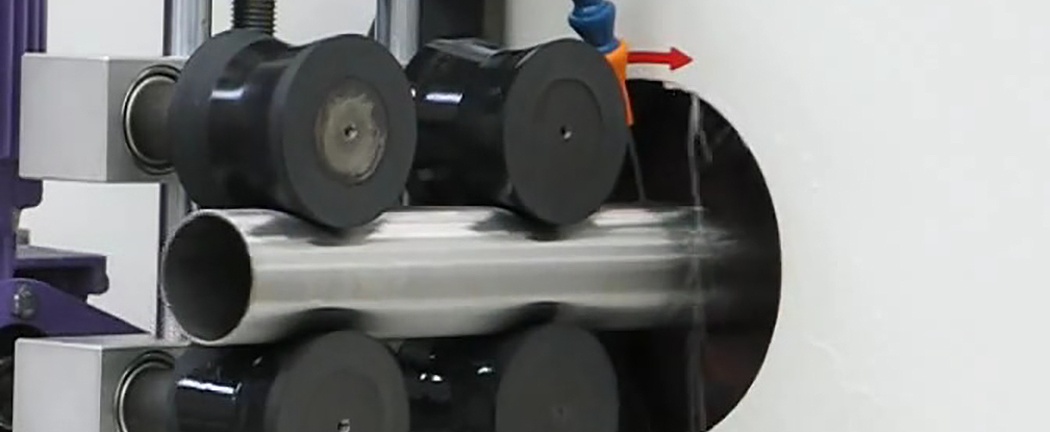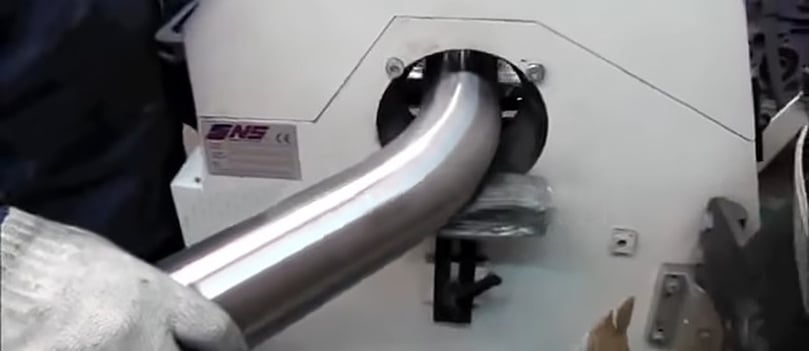

This is the third in a four-part series of blog posts dealing with tube grinding.Click here to read parts one and two.
Planetary tube grinding machines do not spin the tubes during the process, which creates a safe operator environment and eliminates the possibility of barber poling.
Planetary systems also do not require tubes that are perfectly round, and instead can process tubes that are oval or have irregular shapes.
Perhaps most significant, they can grind bent tube. The machines have a main wheel that rotates. In the wheel’s center is a hole for the tube to pass through.
Driving the wheel is a V belt connected to a single-spindle motor. Mounted to the back side of the main wheel, on either side of the center opening, are two belts. The belts travel around rollers (three for each belt) to form two facing triangles, with one triangle’s side parallel to the other; this is where the belts contact the workpiece.
To grind a tube, the rollers spin the two belts, and the main wheel rotates the entire belt assembly, ensuring that abrasive material contacts all points around the tube circumference.
Each belt has:
- A tension roller for tensioning the belt
- A tuner roller that adjusts the belt for different tube diameters
- A drive roller connected to a dedicated, variable-speed motor that allows these belts to spin independently of the main wheel.
The operator adjusts these belts to accommodate specific tube diameters.
Here’s how it works: Picture a planetary grinding machine with the main wheel having a 5-in.- diameter hole in the center, where you insert the tube. When you turn on the machine, you see abrasive belts starting to spin. At first the space between the two belts is too small to allow the tube to enter. To allow the machine to accept the tube, you depress a foot pedal, and the opening between the belts expands.
When the opening is large enough to allow the tube to enter, you feed the tube into the opening and release the pedal, which returns the belts to their original position. They restrict around the tube and create sufficient grinding pressure to remove defects—ultimately creating a grain finish over the tube’s entire circumference. Belts contact the tube in such a way that the tube itself does not spin during the process.
Be sure to watch this video to get an idea of how it looks in action. And watch the fourth and final part of this series, Choosing a Centerless or Planetary Grinding System for Tube Finishing.
Topics planetary grinding machines
